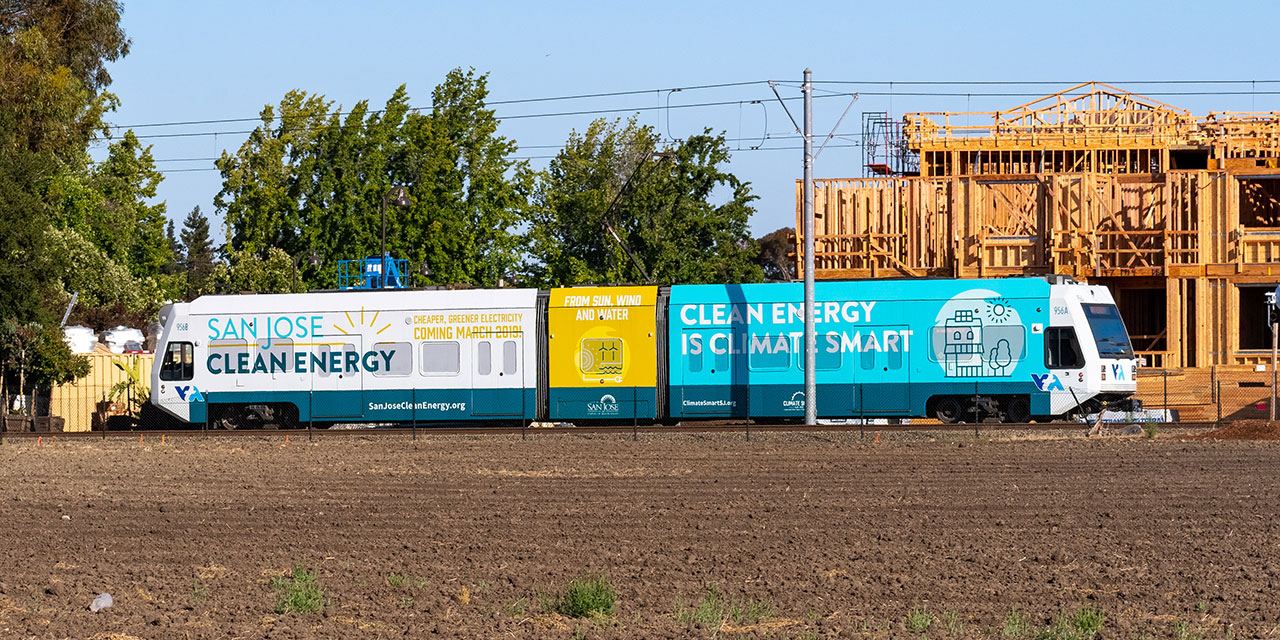A major feature of the urban renaissance of the past three decades has been the rise of “light rail” transit systems. After major federal sponsorship of “Great Society Subway” projects in the 1960s and 1970s (Washington, D.C.’s Metro, San Francisco’s BART, and Atlanta’s MARTA), cities turned away from building expensive underground rail lines in the 1980s. Instead, they constructed cheaper aboveground lines, running smaller trains. In the 30 years after San Diego opened its system in 1981, light rail spread to some 20 cities, including Minneapolis, Charlotte, and Houston. Even Los Angeles, car culture’s queen city, developed a light-rail system that serves more passengers than its subway.
Opened in 1987, San Jose’s Valley Transportation Authority (VTA) was an early leader of light rail’s expansion. But the VTA will become a leader of a different sort when it closes the Almaden branch of its system at the end of this year, due to poor ridership. Not counting some heritage trolly lines, the VTA’s Almaden branch is likely the first passenger rail line to close in almost half a century. Its 2.2 miles of single-track line and two stations—rail infrastructure worth tens of millions of dollars—will soon stand idle.
Why, in a growing and economically thriving city, would a commuter line shut down? The Bay Area is becoming famous for its housing and transportation issues, including choking traffic. San Jose is the self-proclaimed “capital of Silicon Valley,” and tech firms, along with the employees who commute to work for them, have been flooding the region for decades. Ridership on the Caltrain commuter rail system—which runs through VTA territory on the way to San Francisco—has almost tripled in 15 years, with per-mile ridership approaching New York’s Metro North. In this environment, it’s hard to understand why any part of a light rail system could close.
One reason: San Jose’s system is the epitome of style over substance. The city believed that it needed a light-rail system to modernize itself, so it built one without a master plan, and without paying attention to the nuts and bolts of what makes transit work. Most transit systems run lines along major corridors out of downtown—connecting jobs, shopping, and workers. VTA’s network wanders haphazardly, with few riders or destinations, along circuitous routes and aimless branches beside highway medians and old freight corridors.
Consider Stevens Creek Boulevard, which runs eight miles west from downtown San Jose to jobs-rich Cupertino, passing employment centers like Valley Fair Mall. The 42-mile VTA system has no tracks on this street. And going in the other direction, it’s not much better: on the roads, it’s three and a half miles along Santa Clara Street to Alum Rock—but the VTA train travels almost 14 miles to cover this distance, going first north, then south.
California’s High Speed Rail project has been dubbed the “train to nowhere,” in part because construction began in the Central Valley—not an entirely fair characterization, given that any connection between San Francisco and Los Angeles must use the valley. But with its anemic ridership for such a major investment, San Jose’s VTA rail system—and particularly its Almaden spur—is the real train to nowhere. And it has too many parallels around the Bay Area: San Francisco is building a subway under Stockton Street, though nearby Geary Street has more bus riders; VTA planning ignores Stevens Creek Boulevard and Santa Clara Street in favor of middling extensions to roundabout lines; BART, after years of constructing and proposing extensions to far corners of the Bay Area, is just realizing that two-thirds of its ridership comes from the region’s core. Bay Area leaders and transit planners are looking to put a $100 billion transportation bond on the 2020 ballot; one hopes that they will pay more attention to designing projects that stand the test of time.
Photo: Andrei-Stanescu/iStock





